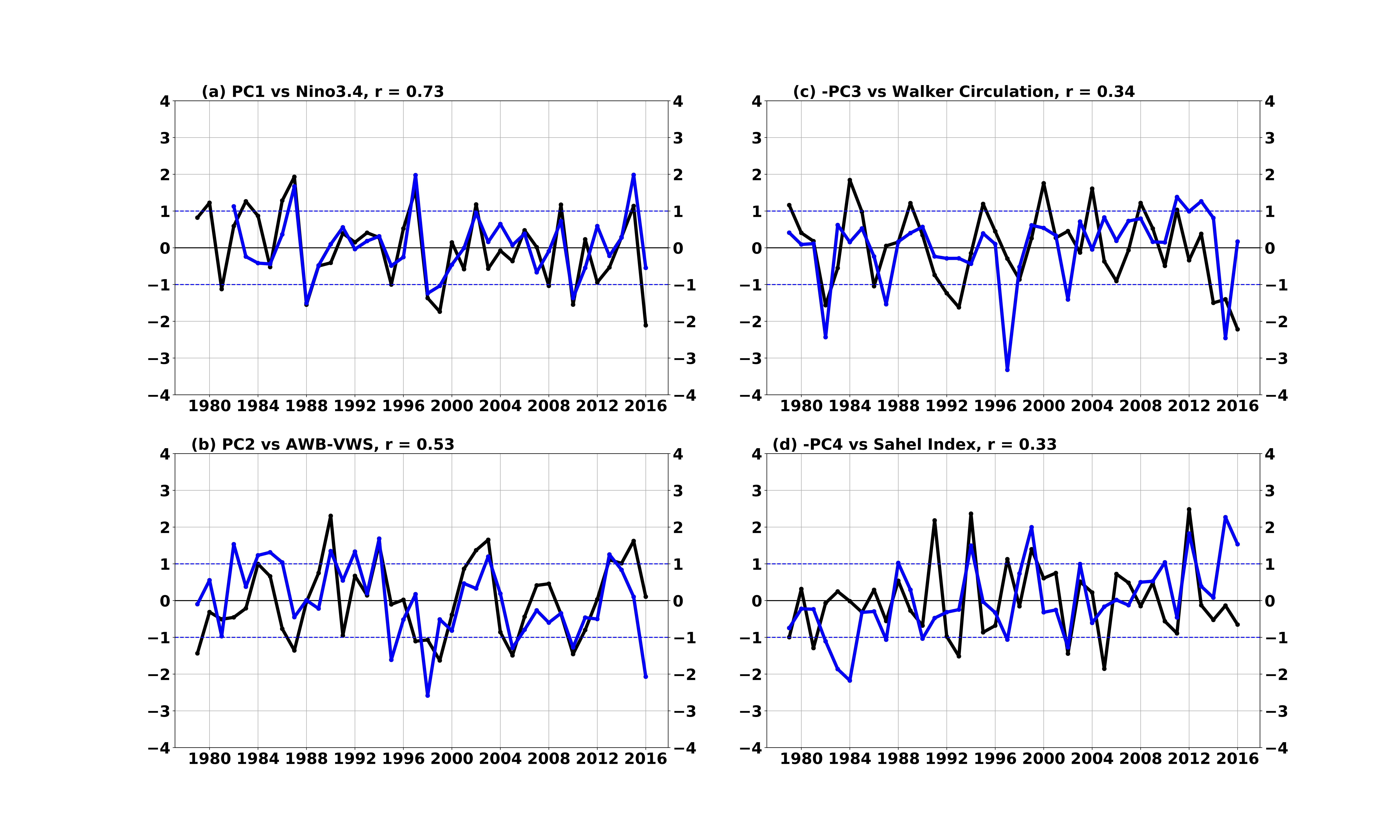Jones, Jhordanne J., Michael M. Bell, Philip J. Klotzbach, : Tropical and Subtropical North Atlantic Vertical Wind Shear and Seasonal Tropical Cyclone Activity. Journal of Climate, vol 33, issue 13 , https://doi.org/10.1175/JCLI-D-19-0474.1
Key Points
Abstract
Given recent insights into the role of anticyclonic Rossby wave breaking (AWB) in driving subseasonal and seasonal North Atlantic tropical cyclone (TC) activity, this study further examines tropical versus subtropical impacts on TC activity by considering large-scale influences on boreal summer tropical zonal vertical wind shear (VWS) variability, a key predictor of seasonal TC activity. Through an empirical orthogonal function analysis, it is shown that subtropical AWB activity drives the second mode of variability in tropical zonal VWS, while El Niño-Southern Oscillation (ENSO) primarily drives the leading mode of variability. Linear regressions of the four leading principal components against tropical North Atlantic zonal VWS and accumulated cyclone energy show that, while the leading mode holds much of the regression strength, some improvement can be achieved with the addition of the second and third modes. Furthermore, an index of AWB-associated VWS anomalies, a proxy for AWB impacts on the large-scale environment, may be a better indicator of summertime VWS anomalies. The utilization of this index may be used to better understand AWB’s contribution to seasonal TC activity.
Key Figure
FIG. 7. The first four principal components (PC) of July-September tropical North Atlantic zonal VWS anomalies. The PCs are expressed as a unit variance from the zero-mean. Each PC (in black) is plotted along with the July-September climate index (in blue) showing the largest correlation with the PC. PCs 3 and 4 are multiplied by a factor of -1 to better highlight the correlation between the corresponding climate index. The Walker circulation and Sahel rainfall indices are standardized to be comparable to PCs 3 and 4. The blue dashed lines indicate $\pm$1 standard deviation.
Acknowledgments
This research was supported by the Office of Naval Research Award N000141613033, the Fulbright Foreign Student Program, the Institute of International Education (IIE), and the G. Unger Vetlesen Foundation. Special thanks to Philippe Papin for his many insights and to Ben Trabing for his invaluable comments and suggestions in the writing of this manuscript. We would also like to thank the Editor and the three anonymous reviewers who provided us with many helpful comments and suggestions that improved the papers final form.
